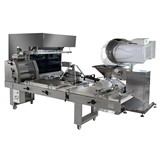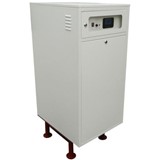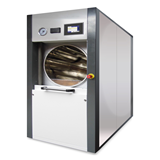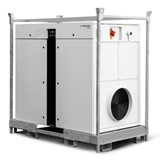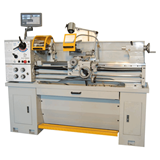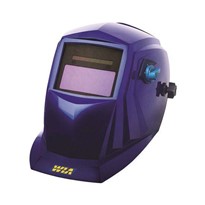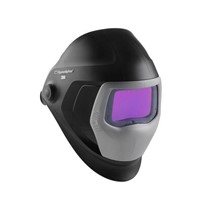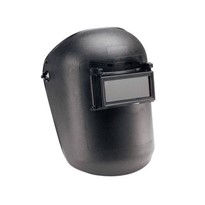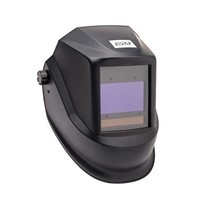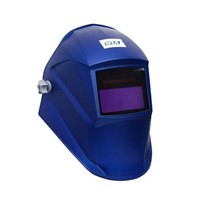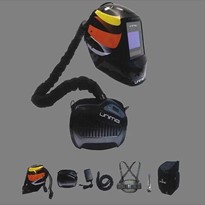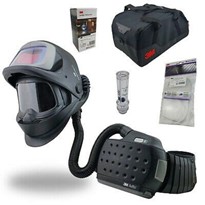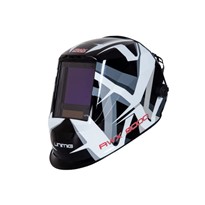These includes the passive or auto-darkening lens, fixed or variable shade, two, three or four sensors and viewing size. Take the time and find the right helmet for your needs, it can increase your productivity, weld quality and comfort.
The helmet you choose should meet Australian Standards AS/NZS 1338.1 (Auto-Darkening) and AS/NZS 1337.1 B (High Impact). This ensures that the helmet and lens has passed independent testing and can survive high impact from flying objects, provide 100% ultraviolet and infrared filtering regardless of shade setting, and meet advertised switching speeds and darkness shades in temperatures as low as -5 degrees and high as 55 degrees.
Passive vs. Auto-Darkening Lens
Welding lens shade numbers refer to the lens' ability to filter light. All auto-darkening welding helmets that meet the Australian standard AS/NZS 1338.1 provide 100% protection against harmful infrared and UV rays and may range from a #8 shade for low-amp applications up to a #13 shade for high-amp applications.
A passive lens helmet uses UV- and IR-coated dark-tinted glass with a fixed shade value, usually #10. This helmet is worn in the up position while the electrode, gun or torch is positioned. With a quick nod or snap of the neck, the operator flips the helmet into position immediately before striking an arc.
Passive lens helmets provide an economical choice; however, they have some cons:
- It can be difficult for novice welders to position the electrode while the helmet snaps into place. This can cause poor weld starts, which may lead to weld defects or the need for excessive grinding.
- Because of the need to repeatedly lift and lower the helmet, tack welding, or numerous short welds, can be difficult.
- Welders need to repeatedly flip the helmet up and down which can cause neck fatigue, and possibly repetitive stress injuries.
- If the helmet fails to lock onto position or if the timing is out, it can lead to inadvertent arc flashes if the arc strikes before the helmet is in place.
An auto-darkening lens addresses the above issues. When inactive, an auto-darkening lens usually has a #3 or #4 shade, which is relatively easy to see through. When the sensors on the helmet sense an arc start, the lens automatically darkens, in a fraction of a second (typically 1/12,000 to 1/20,000 of a second for industrial-grade helmets), to shade #8 to #13.
Because the helmet stays in position before, during, and after the weld, an auto-darkening welding helmet allows you to set up your welding joint with the hood in position. No more head snaps to lower the helmet. No more sloppy starts because the torch moved. No more raising and lowering the helmet for tack welds. Auto-Darkening helmets can improve weld quality, and can ease neck strain associated with snapping the helmet into place.
Auto-Darkening Options
Auto-darkening helmets are available for every welding level, and a range of applications - light industrial to heavy industrial. If you're looking for an auto-darkening helmet there are some things to consider:
- Fixed or variable Shade. When a fixed-shade auto-darkening helmet senses an arc, it darkens to a fixed #10 shade. If you weld similar material of similar thicknesses using the same welding process with a limited amperage range, then a fixed shade helmet may be the right choice for you. However, if you use different welding processes (Stick, MIG, TIG), or vary your welding amperage and therefore vary the brightness of the arc, a variable shade lens will allow you to properly protect your eyes while achieving the best view of the weld puddle. Most variable shade lenses adjust from shade #9 through #13.
- Lens reaction time indicates how quickly the lens will switch from its natural light state (usually shade #3 or #4) to the darkened shade when welding begins. The quicker a welder' s eyes are shaded from the high-intensity light, the better. Entry-level lenses are often rated at 1/3,600 of a second, while industrial or professional grade helmets can be rated as high as 1/20,000 of a second. The more arcs you start in a day, the more you'll appreciate the quicker speed. If you spend all day welding with a lens rated at 1/3,600, the cumulative effect of the increased exposure to the arc light may lead to eye fatigue at the end of the day. With faster switching speeds, these effects are reduced.
- Viewing size is one of the major considerations in purchasing an auto-darkening helmet and is really based on personal preference as well as how much out-of-position welding you're likely to be doing. Typical view sizes range from 26cm sq. for light duty applications to 58cm sq. in. for industrial use.
- Number of sensors. The number of sensors ranges from two for a light industrial level helmet to four for an industrial grade helmet. More sensors mean better coverage, especially for out-of-position welding where a sensor could be obstructed. Three may be sufficient for production work or when you will have a clear line of sight to your work. Four is optimal for most fabrication and out-of-position work.
- Adjustable Sensitivity Control. Both intermediate and professional level auto-darkening helmets usually provide the ability to adjust how much brightness will trigger the lens to darken. Sensitivity control is useful when welding at low amperages, especially TIG, when the arc isn't as bright as other welding processes. Also when welding outside, in bright sunlight it can cause the lens to darken at the end of welding.
- Adjustable Delay Controls. A delay control is another useful feature. This control enables you to set how long the lens stays dark after the welding arc stops. When tack welding on a large project, a short delay helps get the job done faster as you reposition for the next weld. A longer delay time is helpful when welding at very high amperages, since molten metal may still emit harmful rays until it cools.
Other Helmet Considerations
A lighter weight helmet minimizes strain on the user's neck reducing fatigue and increasing comfort. The more you weld, the more you and your neck will appreciate a helmet that weighs less.
Finally, the latest auto-darkening helmets usually provide benefits specifically for the industrial welder: an aluminium heat shield to protect the lens from high heat (300+ amps) applications, silver colouring to reflect the heat away from the wearer, gaskets for shock absorption and increased longevity and commonality of parts to decrease inventory requirements for larger organisations.
If welding is, or is part of your career, take the time to find the helmet that's right for you.
While it may be tempting to buy the least expensive helmet, take the time to explore all options, it can have long-term benefits for your comfort and safety.


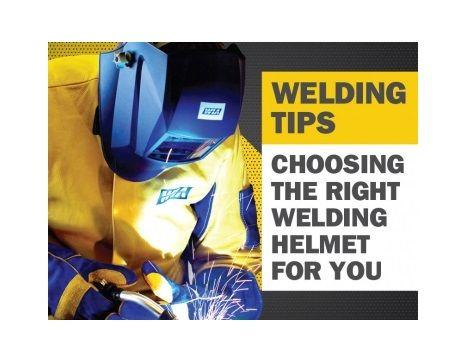
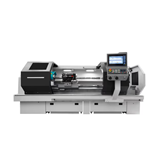


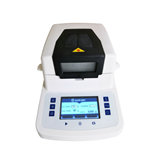
-160x160-state_article-rel-cat.jpg)


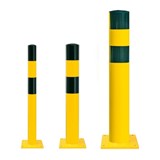

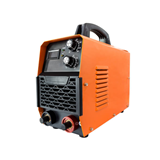
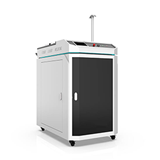


-160x160-state_article-rel-cat.png)
